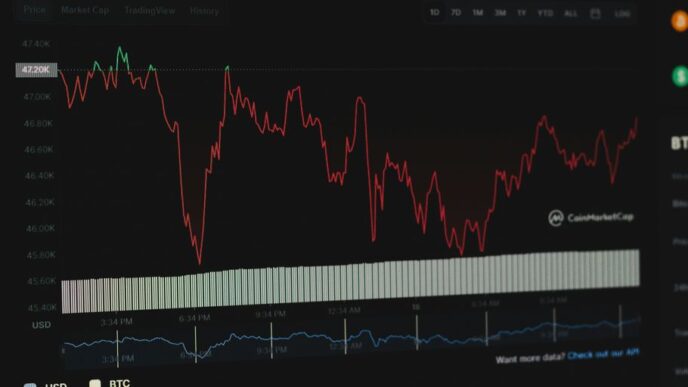The concept of distributed cloud computing is rapidly gaining traction in the tech world. This new approach allows businesses to distribute their cloud services across multiple locations, enhancing flexibility and efficiency. As organizations look for better ways to manage their data and applications, understanding distributed cloud architecture becomes crucial.
Key Takeaways
- Distributed cloud computing spreads resources across various locations, unlike traditional cloud systems that centralize services.
- This architecture improves performance by reducing latency, making applications faster and more responsive.
- Security is enhanced through data distribution, which can safeguard sensitive information more effectively.
- Businesses can scale their operations easily with distributed cloud, adapting to changing needs without major disruptions.
- Integrating edge computing with distributed cloud offers additional benefits, such as quicker data processing and real-time analytics.
Understanding Distributed Cloud Architecture
Key Components of Distributed Cloud
Distributed cloud architecture consists of several key components:
- Edge Devices: These are local devices that process data closer to the source, reducing latency.
- Cloud Services: These services are distributed across multiple locations, allowing for better resource management.
- Network Infrastructure: A robust network is essential for connecting various components efficiently.
How Distributed Cloud Differs from Traditional Cloud
Distributed cloud differs from traditional cloud computing in several ways:
- Location: Traditional cloud services are centralized, while distributed cloud services are spread across multiple locations.
- Latency: With distributed cloud, data processing happens closer to the user, leading to lower latency.
- Scalability: Distributed cloud systems can scale more easily by adding resources in different locations.
Benefits of Distributed Cloud Architecture
The benefits of distributed cloud architecture include:
- Improved Performance: Faster data access and processing due to local resources.
- Enhanced Security: Data is stored in multiple locations, reducing the risk of data loss.
- Flexibility: Organizations can choose where to store their data based on specific needs.
The distributed cloud model is reshaping how organizations think about data management and resource allocation. It allows for a more responsive and efficient approach to cloud computing, meeting the demands of modern applications and services.
| Component | Description |
|---|---|
| Edge Devices | Local devices for processing data |
| Cloud Services | Services distributed across multiple locations |
| Network Infrastructure | Essential for efficient connectivity |
The Evolution of Cloud Computing

From Centralized to Distributed Systems
The journey of cloud computing began with centralized systems, where all data and applications were stored in one location. This model had limitations, such as slow access speeds and single points of failure. As technology advanced, the need for distributed systems emerged, allowing data to be stored across multiple locations. This shift improved reliability and performance, making cloud services more accessible to users.
Milestones in Cloud Computing
Several key milestones have shaped the cloud computing landscape:
- Introduction of Virtualization: This technology allowed multiple virtual machines to run on a single physical server, optimizing resource use.
- Launch of Major Cloud Providers: Companies like Amazon Web Services (AWS) and Microsoft Azure revolutionized the market by offering scalable cloud solutions.
- Advent of Serverless Computing: This model allows developers to build applications without managing servers, further simplifying cloud usage.
Future Trends in Cloud Technology
Looking ahead, we can expect:
- Increased Adoption of AI: Artificial intelligence will enhance cloud services, making them smarter and more efficient.
- Greater Focus on Security: As cyber threats grow, cloud providers will prioritize security measures to protect user data.
- Expansion of Edge Computing: This technology will bring data processing closer to the user, reducing latency and improving performance.
The evolution of cloud computing is a testament to the industry’s ability to adapt and innovate, ensuring that users receive the best possible services.
Key Benefits of Distributed Cloud
Enhanced Performance and Latency
One of the main advantages of distributed cloud is its ability to improve performance. By placing resources closer to users, it reduces latency. This means faster access to applications and data, which is crucial for businesses that rely on real-time information.
Improved Data Security
With distributed cloud, data is stored in multiple locations, making it harder for hackers to access all of it at once. This enhanced security helps protect sensitive information, especially for industries like healthcare and finance.
Scalability and Flexibility
Distributed cloud systems are highly scalable. Businesses can easily add or remove resources based on their needs. This flexibility allows companies to adapt quickly to changing demands without significant downtime.
Summary of Benefits
| Benefit | Description |
|---|---|
| Enhanced Performance | Faster access to applications and data |
| Improved Data Security | Harder for hackers to access all data at once |
| Scalability and Flexibility | Easy to add or remove resources as needed |
The distributed cloud model not only enhances performance but also provides a robust framework for security and scalability, making it a preferred choice for modern businesses.
Challenges in Implementing Distributed Cloud
Technical Complexities
Implementing a distributed cloud can be quite tricky. Here are some of the main technical challenges:
- Integration: Connecting different cloud services can be hard.
- Data Management: Keeping track of data across multiple locations is complicated.
- Latency Issues: Delays can happen when data travels between clouds.
Cost Considerations
While distributed cloud can save money in the long run, there are initial costs to think about:
- Setup Costs: Getting everything ready can be expensive.
- Ongoing Maintenance: Regular updates and fixes can add up.
- Training Staff: Employees may need training to handle new systems.
Regulatory and Compliance Issues
Following the rules is crucial when using a distributed cloud. Some challenges include:
- Data Privacy: Different regions have different laws about data.
- Compliance: Keeping up with regulations can be tough.
- Security Risks: More locations mean more chances for data breaches.
Managing a distributed cloud requires careful planning and ongoing management to ensure success. This page from techannouncer provides a comprehensive guide on ensuring a successful transition to cloud services. It covers essential strategies, best practices, and considerations for businesses looking to leverage cloud technology effectively.
Use Cases of Distributed Cloud
Distributed Cloud in Healthcare
In healthcare, distributed cloud technology is transforming patient care. Hospitals can store sensitive data closer to where it is generated, ensuring faster access and compliance with regulations. Key benefits include:
- Improved patient outcomes through real-time data access.
- Enhanced collaboration among healthcare providers.
- Better data security by keeping sensitive information local.
Applications in Financial Services
The financial sector is leveraging distributed cloud to enhance security and efficiency. By using this technology, banks can:
- Reduce latency in transactions.
- Improve fraud detection with real-time analytics.
- Ensure compliance with local regulations by keeping data within specific regions.
Impact on E-commerce
E-commerce businesses are adopting distributed cloud to enhance user experience. This approach allows for:
- Faster load times for websites.
- Better handling of peak traffic during sales events.
- Localized data storage to comply with regional laws.
The rise of distributed cloud is reshaping industries by providing tailored solutions that meet specific needs while enhancing performance and security.
| Industry | Key Benefits |
|---|---|
| Healthcare | Improved patient outcomes |
| Financial Services | Enhanced security and compliance |
| E-commerce | Faster load times and better user experience |
Distributed Cloud and Data Management
Data Storage Solutions
In a distributed cloud, data is stored across multiple locations. This setup helps in managing data more efficiently. Here are some key storage solutions:
- Object Storage: Great for unstructured data like images and videos.
- Block Storage: Ideal for databases and applications needing fast access.
- File Storage: Useful for shared files and documents.
Data Privacy and Security
Data privacy is crucial in a distributed cloud. Organizations must ensure that data is protected across all locations. Here are some important practices:
- Encryption: Always encrypt data at rest and in transit.
- Access Control: Limit who can access sensitive data.
- Regular Audits: Conduct audits to check for vulnerabilities.
Data Analytics in Distributed Cloud
Data analytics can be enhanced in a distributed cloud environment. By processing data closer to where it is generated, organizations can:
- Reduce latency
- Improve real-time decision-making
- Gain insights faster
In summary, managing data in a distributed cloud requires careful planning and execution. Organizations must prioritize security and efficiency to fully leverage the benefits of this architecture.
The Role of Edge Computing in Distributed Cloud

Integrating Edge and Distributed Cloud
Edge computing is a key part of the distributed cloud model. It allows data to be processed closer to where it is generated, which can lead to faster responses and less delay. This is especially important for applications that need real-time data, like self-driving cars or smart cities. By combining edge computing with distributed cloud, organizations can achieve:
- Lower latency: Data is processed near its source.
- Better bandwidth usage: Less data needs to travel long distances.
- Enhanced reliability: Local processing can continue even if the central cloud is down.
Benefits of Edge Computing
The advantages of using edge computing in a distributed cloud setup include:
- Faster processing: Immediate data analysis reduces wait times.
- Increased security: Sensitive data can be processed locally, minimizing exposure.
- Cost savings: Reducing data transfer can lower costs associated with bandwidth.
Real-World Applications
Many industries are already using edge computing with distributed cloud solutions. Some examples are:
- Healthcare: Real-time patient monitoring systems.
- Retail: Smart inventory management that updates stock levels instantly.
- Manufacturing: Predictive maintenance that analyzes machine data on-site.
In summary, the integration of edge computing with distributed cloud architecture is transforming how data is processed and utilized across various sectors. This shift not only enhances performance but also opens up new possibilities for innovation and efficiency.
Security Considerations for Distributed Cloud
Threat Detection and Prevention
In a distributed cloud, security is crucial. Organizations must implement strong measures to detect and prevent threats. Here are some key strategies:
- Regular Security Audits: Conduct audits to identify vulnerabilities.
- Real-Time Monitoring: Use tools to monitor systems continuously.
- Incident Response Plans: Have a plan ready for quick action during a security breach.
Zero Trust Security Models
The Zero Trust model is gaining popularity in distributed cloud environments. This approach assumes that threats can come from both outside and inside the network. Key principles include:
- Never Trust, Always Verify: Always verify user identities and devices.
- Least Privilege Access: Limit user access to only what is necessary.
- Continuous Monitoring: Regularly check for unusual activities.
Best Practices for Cloud Security
To ensure a secure distributed cloud, follow these best practices:
- Data Encryption: Encrypt data both in transit and at rest.
- Multi-Factor Authentication: Use multiple methods to verify user identities.
- Regular Software Updates: Keep all software up to date to protect against vulnerabilities.
In today’s digital world, security is not just an option; it’s a necessity. Organizations must prioritize security to protect their data and maintain trust with their customers.
Future of Distributed Cloud
Predictions for Distributed Cloud Adoption
The future of distributed cloud is bright, with many experts predicting a significant increase in its adoption. More businesses are expected to shift towards this model as they seek better performance and flexibility. Here are some key predictions:
- Increased integration with edge computing.
- Greater focus on data security and privacy.
- More companies will adopt hybrid cloud strategies.
Technological Innovations on the Horizon
As technology evolves, distributed cloud will benefit from several innovations. Some of these include:
- Enhanced AI capabilities for better data management.
- Improved network infrastructure to support faster data transfer.
- Advanced automation tools for easier management.
Impact on Global IT Infrastructure
The rise of distributed cloud will reshape the global IT landscape. It will lead to:
- A shift from centralized data centers to decentralized networks.
- Increased collaboration between cloud providers and businesses.
- A focus on sustainability in cloud operations.
The distributed cloud model is not just a trend; it represents a fundamental change in how we think about cloud computing. As businesses adapt, they will find new ways to leverage this technology for growth and efficiency.
Summary
In summary, the future of distributed cloud looks promising. With advancements in technology and a growing emphasis on security and flexibility, it is set to become a cornerstone of modern IT strategies. Companies that embrace this shift will likely gain a competitive edge in their industries.
Distributed Cloud vs. Multi-Cloud Strategies
Key Differences and Similarities
Distributed cloud and multi-cloud strategies are two approaches to cloud computing that serve different needs. Here are some key differences:
- Distributed Cloud: This model involves distributing cloud resources across multiple locations while maintaining a single management interface. It allows for data to be processed closer to where it is generated.
- Multi-Cloud: This strategy uses services from multiple cloud providers. Organizations can choose the best services from different vendors to meet their needs.
| Feature | Distributed Cloud | Multi-Cloud |
|---|---|---|
| Resource Location | Distributed across multiple sites | Multiple providers |
| Management | Centralized management | Decentralized management |
| Data Processing | Closer to data source | Varies by provider |
Advantages and Disadvantages
Both strategies have their pros and cons:
- Distributed Cloud Advantages:
- Multi-Cloud Advantages:
Choosing the Right Strategy
When deciding between distributed cloud and multi-cloud, consider the following:
- Business Needs: What are your specific requirements?
- Data Compliance: Are there regulations that affect where your data can be stored?
- Cost: What is your budget for cloud services?
In the end, the choice between distributed cloud and multi-cloud strategies depends on your organization’s unique needs and goals. Understanding these differences can help you make an informed decision.
Industry Leaders in Distributed Cloud
Top Companies Pioneering Distributed Cloud
Several companies are leading the way in the distributed cloud space. Here are some of the most notable:
- Amazon Web Services (AWS): Known for its extensive cloud services, AWS is integrating distributed cloud solutions to enhance performance.
- Microsoft Azure: Azure is focusing on hybrid cloud solutions, allowing businesses to manage data across multiple locations.
- Google Cloud: Google is leveraging its global infrastructure to provide distributed cloud services that prioritize speed and efficiency.
Innovative Solutions and Services
These companies offer various solutions that help businesses transition to a distributed cloud model:
- Edge Computing: This technology allows data processing closer to the source, reducing latency.
- Multi-Cloud Management: Tools that help manage resources across different cloud providers.
- Data Security Solutions: Enhanced security measures to protect data across distributed environments.
Case Studies of Successful Implementations
Many organizations have successfully adopted distributed cloud strategies. Here are a few examples:
| Company | Industry | Implementation Details |
|---|---|---|
| Healthcare Inc. | Healthcare | Used distributed cloud for patient data management, improving access and security. |
| FinTech Corp. | Financial Services | Implemented multi-cloud solutions for better risk management and compliance. |
| Retail Giant | E-commerce | Leveraged distributed cloud to enhance customer experience through faster service delivery. |
The rise of distributed cloud is reshaping how businesses operate, providing them with the flexibility and security they need in today’s digital landscape.
Conclusion
As the demand for cloud solutions grows, these industry leaders are setting the standard for what a distributed cloud can achieve. Their innovative approaches and successful implementations are paving the way for a more connected and efficient future in cloud computing.
Distributed Cloud and Artificial Intelligence
AI-Powered Cloud Solutions
Artificial Intelligence (AI) is changing how we use cloud services. AI can analyze large amounts of data quickly, making it easier for businesses to make decisions. Here are some key points about AI in the cloud:
- Data Processing: AI helps in processing data faster than traditional methods.
- Predictive Analytics: Businesses can predict trends and customer behavior using AI.
- Automation: AI automates routine tasks, saving time and resources.
Machine Learning in Distributed Cloud
Machine Learning (ML), a part of AI, is also growing in distributed cloud environments. It allows systems to learn from data and improve over time. Some benefits include:
- Personalization: Tailoring services to individual users based on their preferences.
- Fraud Detection: Identifying unusual patterns that may indicate fraud.
- Resource Optimization: Efficiently using cloud resources to reduce costs.
Future Prospects of AI in Cloud Computing
The future of AI in cloud computing looks bright. Here are some predictions:
- Increased Integration: More businesses will integrate AI into their cloud services.
- Enhanced Security: AI will help improve security measures in the cloud.
- Greater Accessibility: AI tools will become more user-friendly, allowing more people to use them.
The combination of AI and distributed cloud technology is set to revolutionize how we manage and utilize data, leading to smarter and more efficient systems.
| Aspect | Traditional Cloud | Distributed Cloud |
|---|---|---|
| Data Processing Speed | Slower | Faster |
| Scalability | Limited | Highly Scalable |
| Cost Efficiency | Higher Costs | Lower Costs |
Conclusion
In summary, the rise of distributed cloud computing is changing how we think about technology. This new way of using the cloud allows businesses to store and manage their data in different places, making it safer and faster. As more companies adopt this approach, we can expect better performance and more flexibility. The future of cloud computing looks bright, and it will be exciting to see how it continues to evolve and improve our digital lives.
Frequently Asked Questions
What is distributed cloud computing?
Distributed cloud computing means using multiple cloud services spread out over different locations. This helps improve speed and reliability.
How is distributed cloud different from traditional cloud?
In traditional cloud, all data is stored in one central place. In distributed cloud, data is spread out, which can make it faster and safer.
What are the main benefits of distributed cloud?
Some benefits include better speed, improved security for data, and the ability to grow easily as needed.
What challenges come with using distributed cloud?
Challenges include technical difficulties, costs, and keeping up with rules and regulations.
How is distributed cloud used in healthcare?
In healthcare, distributed cloud can help store patient data securely and allow quick access to it from different locations.
What role does edge computing play in distributed cloud?
Edge computing helps process data closer to where it is created, which can improve speed and efficiency in distributed cloud systems.
How can companies ensure security in a distributed cloud?
Companies can use methods like strong encryption and regular security checks to keep data safe in a distributed cloud.
What does the future hold for distributed cloud technology?
The future looks bright, with more businesses likely to adopt it for better performance and flexibility.













